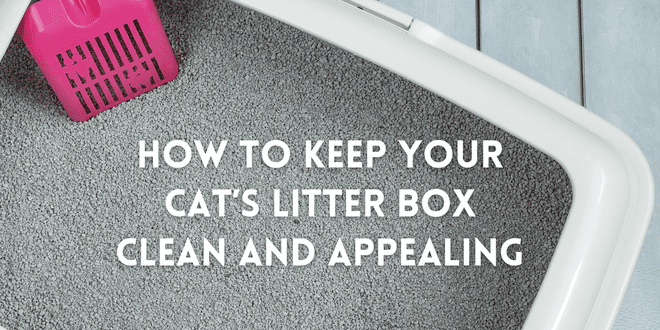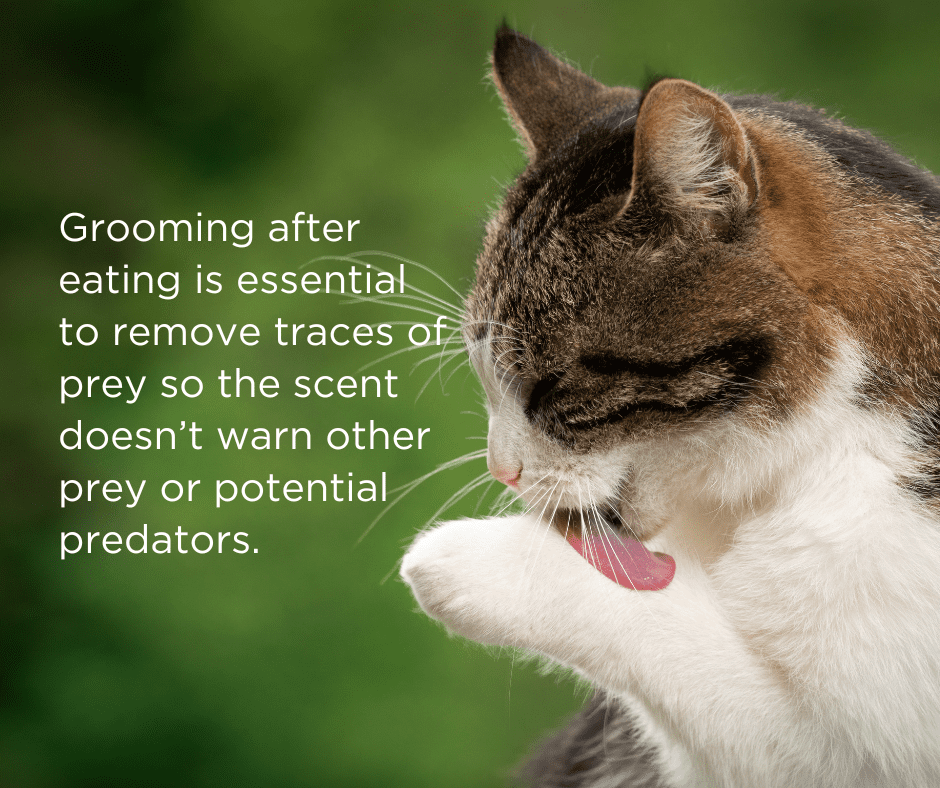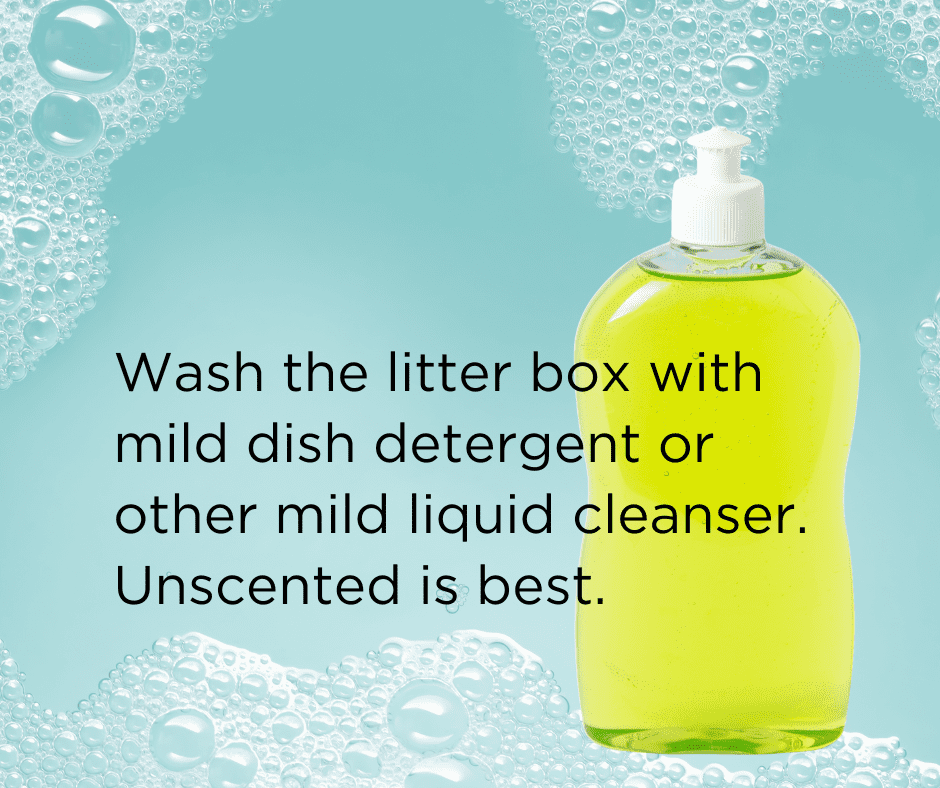
[ad_1]

Anyone even remotely familiar with cats is aware of their fastidious nature. Cats dedicate a considerable portion of their daily routine to grooming and maintaining an immaculately clean coat. Despite having this knowledge of the nature of cats, some cat parents underestimate the importance of a cat’s need for cleanliness in other aspects of daily life, such as having clean litter boxes. It’s completely unfair to blame cats for seeking alternative locations for elimination when the conditions of their litter boxes are dirty and uninviting.
Cleanliness is in the Cat’s Nature
The cat’s fastidious nature is not just about keeping the coat looking good. That passion for cleanliness is rooted in health and survival. Their frequent grooming removes debris and parasites from the coat and is also a way to cool down in hot weather. Grooming after eating is essential to remove traces of prey so the scent doesn’t warn other prey that a predator is in the area. Post-meal grooming also helps prevent alerting other predators that the cat is nearby.

Photo: Nils Jacobi for Getty Images: Canva
Cats are also very particular and hygienic about their elimination habits as well. To avoid attracting predators, cats dig a hole, eliminate, and then cover their waste. This instinctual behavior is critical to survival, and even indoor cats with no danger of being attacked by predators retain this sense. That’s one of the aspects of cat life that many people find convenient because cats don’t have to be walked outdoors and are easily trained to a litter box. Yet, some cat parents don’t grasp the importance of maintaining the litter box in order to keep it clean and inviting for cats.
The Importance of Litter Box Maintenance
Neglecting to maintain this essential aspect of cat care can lead to stress, health issues, and behavior problems. Cats who have to use a dirty litter box or must share a box with too many other cats may, in desperation, resort to relieving themselves away from the box. What can make this stressful situation even more tragic is if the cat parent then punishes the cat for the behavior.
A dirty litter box also becomes a breeding ground for odor and bacteria accumulation. This puts the cat’s health at risk and makes the living environment unhealthy.
Twice-daily scooping is also an important monitoring tool to stay on top of the cat’s health. Frequently checking and scooping the box can alert cat parents to potential issues such as changes in the cat’s elimination habits, a difference in waste appearance, change in odor, blood in urine, constipation, or diarrhea.
The Litter Box Maintenance Routine
Establish a good litter box maintenance routine and stick to it for the cat’s sake. Here are basic steps to get your started:
Frequent Scooping. The box should be scooped at least twice a day to remove wet urine clumps and feces. This is essential to ensuring your cat always has enough clean areas in the box each time he returns to eliminate. And, as mentioned, it enables you to do a quick check to make sure everything looks normal and healthy.
To make scooping most convenient, dispose of the litter clumps and fecal waste into either a designated litter disposal container (there are several brands available) or a nearby small waste can with a secure lid. Line the waste can with a small trash bag and empty the contents daily. Always ensure the waste can’s lid fits tightly to prevent odor.
Keep a Consistent Litter Level. As you scoop, you’ll need to top off the litter every few days or so to maintain the same level. Cats are creatures of habit, so it provides comfort to step into the box with a consistent amount of litter.
Thorough Cleaning of the Box. How often the box needs to be washed is dependent on the type of litter used. Boxes filled with clumping litter should be thoroughly washed once or twice a month, while boxes containing non-clumping litter require weekly cleaning. You may need to adjust this schedule and wash more frequently, based on your cat’s litter box habits.
Cleaning the box involves completely emptying out the litter, scrubbing with mild detergent, and then a thorough rinsing to remove all traces of soap. You can use mild dish detergent or any other mild soap.

Photo: Viorika for Getting Images Signature: Canva
Discard the soiled litter by putting it in a sealed plastic bag before placing it in your outdoor trash can. Even if the litter is flushable, don’t empty the entire contents of the litter box into the toilet.
Replace the Box When Needed. After washing the box, before refilling with fresh litter, inspect it to check for scratches or traces of retained odor. Plastic tends to hold odors so if the box still smells, even after washing, it’s time for a replacement. Boxes with lots of scratches from the cat’s claws will also tend to hold odor so those will need to be replaced as well. Litter boxes aren’t made to last forever.
Choosing the Right Litter
There are many litters available. In general, cats prefer a soft, sand-like texture to the litter. Scoopable clumping litter works well for this. While scented litter may be appealing to the human family members, they are often off-putting to the cats who must use the box. Choose unscented litter out of respect for your cat’s sensitive nose.
There are also many alternative type litters available that may work if your cat has an aversion to scoopable litter or clay litter in general. Keep in mind that the litter choice should be based on what works best for your cat. If you aren’t sure which litter your cat would like, set out a few boxes cafeteria-style, each containing a different litter, and let your cat make the decision.
Additional Tips for Litter Box Success
In addition to the fundamentals of litter box cleaning and maintenance, here are some other important tips to help ensure litter box happiness:
Provide the Right Sized Box. Remember, it’s about your cat’s comfort and not your desire to squeeze the box in the smallest corner in the house. The litter box should be 1 ½ times the length of your cat.
Photo: Pixelshot/Canva
Choose an Open Box. Most cats prefer an uncovered box that will provide maximum escape potential. Covered boxes can make a cat feel cramped and it also traps the odor inside.
Provide Multiple Boxes. If you have more than one cat, it’s essential to have multiple boxes. Cats can have preferred personal areas and providing enough boxes ensures each cat has safe access to a litter box without having to cross onto another cat’s turf.
Choose the Right Location. Place litter boxes in quiet, low-traffic areas of your home but they also need to be convenient for the cat to access. Don’t place them in closets, under furniture or wedged in remote areas because it can be difficult for cats to get to them in time.
Monitor Litter Box Habits. As I previously mentioned, scooping the litter box is a valuable tool for monitoring your cat’s health. If your cat eliminates outside of the litter box, it can be an indication of an underlying medical issue. If your cat shows a change in litter box habits or begins urinating or defecating outside of the box, it’s time for an immediate veterinary visit.
Do Your Part
Your cat depends on you for creating an appealing and comfortable litter box set-up, as well as regular litter box maintenance. It’s a central aspect of your cat’s health and happiness.
Need More Information?
For more information on litter box issues or other aspects of cat behavior, refer to the best-selling books by Pam Johnson-Bennett. Pam’s books are available at bookstores and online. We’ve included links to Amazon here on our website.
[ad_2]








